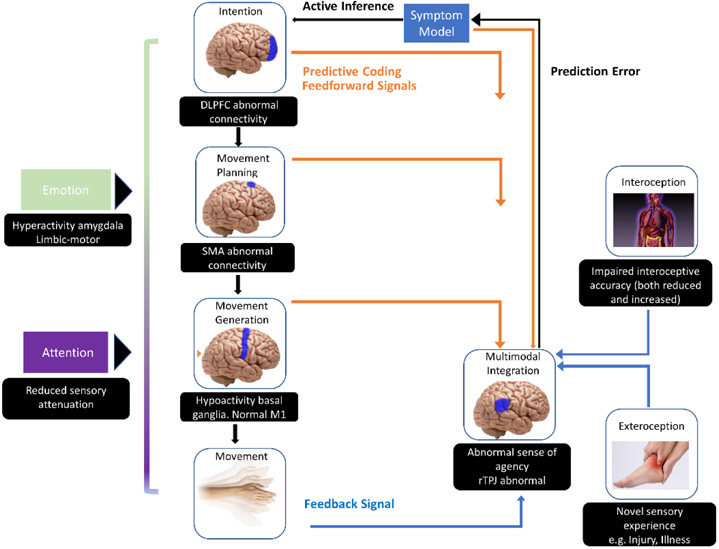Figure 2. Neural mechanisms of FND.
This scheme relates to FMD but its principles are applicable to all FNDs. Movements are generated by motor cortex after planning/preparation in SMA. This produces feedforward signals to be compared to feedback from interoceptive and external signals after action. If signals don’t match, movement will not be appreciated as voluntary. The brain has a model of the body and world which adds predictive coding to this multimodal integration. Feedback signals that don’t match predictive coding create prediction error, which modifies the model so that predictive coding matches subsequent feedback. In FND, it is hypothesized that prediction error is not accurately updated, perpetuating dysfunction.
FMD = functional movement disorder; DLPFC=Dorsolateral Prefrontal Cortex; SMA=Supplementary Motor Area; M1= Primary Motor Area; rTPJ=Right Temporoparietal Junction

